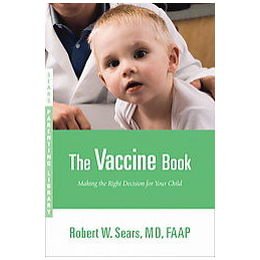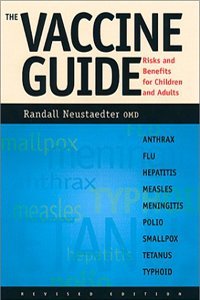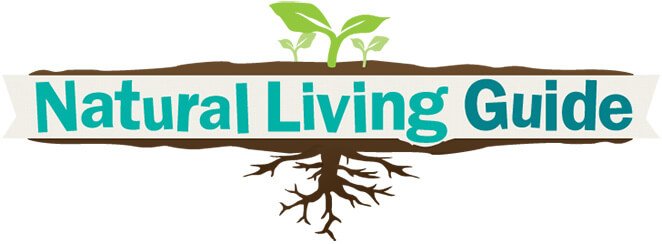Guest Post Written by Christina
Over the past two weeks, we’ve been approaching the subject of childhood immunizations, trying to come to the issue logically and methodically in order to make the best decisions for our children:
The Thoughtful Parent’s Guide to Thinking Through Vaccinations (part 1)
10 Questions to Ask (part 2)
Many of you have asked for resources and articles so that you can continue your own thinking and start wading through your own research.
I recommend starting a three-ring notebook or folder. Print off or copy articles as you find them (making sure you have the source noted so you can direct someone else to find it… or re-access it). You may want to make a section for each vaccine, with an extra section for vaccines in general.
The following is a brief reading list (think of them as “Consumer Reports” for your “Tools“). I’ve divided them into pro-vaccine and cautionary vaccine categories for ease of reference, however, I actually would recommend reading both a pro-vaccine and a cautionary book side by side.
Start off reading the introductions to get a big-picture overview of the author’s view and bottom-line assumptions. Then, I usually read a chapter from one perspective, then about that same vaccine from another perspective, so you can compare the two; try and fill in any gaps or see if the “other side” can explain the accusations of the other.
If you are pressed on time and don’t want to tackle the CDC schedule as a whole, you may want to target one vaccine (perhaps the next one “up” for your child) and read as many perspectives on it as you can.
Here is an annotated list of articles and books:
Pro-vaccine:
The Institute of Vaccine Safety Vaccine Package Inserts– Keep this handy for reference when you want ingredients and side-effects in each vaccine, etc.
 The Vaccine Book: Making the Right Decision for Your Child (Sears Parenting Library) by Dr. Bob Sears (though he has an alternative schedule, he is fundamentally FOR vaccines; his goal is to provide a schedule so all parents feel comfortable fully vaccinating their children). This book is a great place to start looking at ingredients. Dr. Sears’ main concern is the adjuvants (ingredients added to the disease-causing medium, especially aluminum. His alternative vaccination schedule spaces vaccines containing similar ingredients out to allow the body time to filter toxins out. However, he never once questions the efficacy of vaccines, and assumes that combination shots are less toxic due to their lower adjuvant content, instead of being concerned about the tax of simultaneous immune reactions.
The Vaccine Book: Making the Right Decision for Your Child (Sears Parenting Library) by Dr. Bob Sears (though he has an alternative schedule, he is fundamentally FOR vaccines; his goal is to provide a schedule so all parents feel comfortable fully vaccinating their children). This book is a great place to start looking at ingredients. Dr. Sears’ main concern is the adjuvants (ingredients added to the disease-causing medium, especially aluminum. His alternative vaccination schedule spaces vaccines containing similar ingredients out to allow the body time to filter toxins out. However, he never once questions the efficacy of vaccines, and assumes that combination shots are less toxic due to their lower adjuvant content, instead of being concerned about the tax of simultaneous immune reactions.
Vaccinated: One Man’s Quest to Defeat the World’s Deadliest Diseases by Dr. Paul Offit. This is essentially a biography of Maurice Hilleman, the man who made many of the vaccines still used today. It is always helpful to understand why someone did what they did, and this gives a lot of insights into Hilleman’s world view, assumptions, and motivations. I found it revealing that he turned away from the strict Christian views of his family and embraced science as a better alternative, idolizing Charles Darwin and believing that vaccines were one more step in man’s evolution.
Vaccines: What Every Parent Should Know by Dr. Paul Offit & Louis M. Bell. Paul Offit is today’s most outspoken vaccine advocate, challenging even Dr. Sears’ schedule. He has many books on the subject (including The Cutter Incident, and Autism’s False Prophets, neither of which I have yet read). Please try not to let its oversimplified tone insult your intelligence so much that you throw it away after one chapter; it is very revealing. The opening story contrasts two children; one whose parent refused a vaccine, and one who sought it out. The unvaccinated child later caught the disease with great discomfort. The vaccinated child suffered only a sore arm for a day or so. End of story. Ah, if only it were that simple! If only we could choose a vaccine over a disease, instead of having to weigh partial vaccine immunity, possible short & long-term side effects, and multiple-drug interactions (CDC vaccine schedule) against natural immunity, immune-boosting nutrition, and the possible benefits and/or risks of a wild disease! Another revealing (and either twisted or insulting) aspect is Offit’s description of the wonderful, life-saving idea of removing all potential legal responsibility for vaccine side-effects from vaccine manufacturers and placing that instead on the government (i.e. taxpayers), leaving them “free” to continue to manufacture vaccines without fear…or responsibility for their products’ safety records. There is little by way of footnotes; this is written to soothe the fears of scared parents, not to encourage them to research more. Needless to say, I was not impressed.
CDC Vaccine Guide – This will provide you with up-to-date official recommendations et al.
Cautionary:
“A User-Friendly Vaccination Schedule” by Dr. Donald W. Miller, Jr. (cardiac surgeon). Dr. Miller points out the lack of any randomized controlled study where vaccines are concerned as a whole, again raising concern for the aggressive schedule which gives a child’s brain no time to heal between attacks. He describes the difference in fetal/infant and adult immune responses and explains how vaccines can disrupt the transition from one to another.
“The Danger of Excessive Vaccination During Brain Development” by Dr. Russel L. Blaylock (now-retired neurosurgeon). This article challenges the CDC schedule as a whole, examining the dangers repeated, frequent, powerful immunizations pose to a developing brain. An excellent starting point for your thought process. To date, I have never found any answer to this criticism of today’s vaccination campaigns at all. Many articles try to disprove a link between autism and a particular vaccine, but never do they address vaccines as the package deal most parents are expected to take.
“The Challenge to Mass Vaccination” by Barbara Loe Fisher. One of the first voices to question vaccines in America (especially the DTP), she summarizes her own article in this way: “First, is it better to protect children against infectious disease early in life through temporary immunity from a vaccine or are they better off contracting certain contagious infections in childhood and attaining permanent immunity? Second, do vaccine complications ultimately cause more chronic illness and death than infectious diseases do? Both questions essentially pit trust in human intervention against trust in nature and the natural order, which existed long before vaccines were created by man.”
 The Vaccine Guide: Risks and Benefits for Children and Adults by Randall Neustaedter. This is my favorite book on the topic, largely because of the first chapter. He starts off with a great big-picture overview of vaccines and how they fit into modern medicine and the allopathic way of treating the body. I feel that, of all the books I’ve read so far, he provides the most calm overview of vaccines without assigning or assuming evil motives on the part of vaccine developers. He gives a variety of strategies for dealing with each vaccine-treatable-disease (ex. either vaccinate at X age, or use this brand or vaccine instead, or treat the actual disease in this way, or in an emergency get this emergency version of the vaccine).
The Vaccine Guide: Risks and Benefits for Children and Adults by Randall Neustaedter. This is my favorite book on the topic, largely because of the first chapter. He starts off with a great big-picture overview of vaccines and how they fit into modern medicine and the allopathic way of treating the body. I feel that, of all the books I’ve read so far, he provides the most calm overview of vaccines without assigning or assuming evil motives on the part of vaccine developers. He gives a variety of strategies for dealing with each vaccine-treatable-disease (ex. either vaccinate at X age, or use this brand or vaccine instead, or treat the actual disease in this way, or in an emergency get this emergency version of the vaccine).
The Virus and the Vaccine: Contaminated Vaccine, Deadly Cancers, and Government Neglect by Debbie Bookchin & Jim Schumacher. This addresses the topic of SV-40, the virus that contaminated many doses of early polio vaccines.
Make an Informed Vaccine Decision for the Health of Your Child: A Parent’s Guide to Childhood Shots by Dr. Mayer Eisenstein. Another heavily-footnoted book, Dr. Eisenstein (a Medical Doctor as well as a Master of Public Health & Doctor of Law) tackles each vaccine individually, taking a question-and-answer format. He has additional chapters on multiple vaccines, aluminum, autism & social obligation.
The Vaccine Safety Manual by Neil Z. Miller. The forward by Dr. Blaylock is almost worth the price of the book on its own. I also appreciated the chapter on smallpox, a disease we no longer see as a threat. Usually we assume that this is because it was the subject of the first vaccination campaign… after reading this book you will know that the opposite is true. Written with Dr. Eisenstein, much of the content and style of presentation are very similar to Make an Informed Decision for the Health of Your Child. (Read Miller’s take on polio here.)
Generation Rescue’s website– this website is a the product of a group of parents, scientists, and physicians dedicated to helping parents treat and help their children with autism, ADHD and other chronic illnesses. Many articles on the science page relate to vaccines, and the pages relating directly to vaccines have many suggestions for vaccine options.
Using These Resources
As you read these books, look up the footnotes for scholarly articles and studies. Many are available online– try typing the title and author into Google Scholar and see what you can come up with. If you live near a college or university you may also be able to use their scholarly journal database. Print out anything you can so you have it on hand!
One last note regarding comparing information: when you come to information that seems at odds, pay close attention to the scale of the graph and what it is showing. Take for example these two takes on vaccination’s effects on polio: in this article, Neil Miller uses a graph of polio deaths per year (Figure 4, page 4) to show that polio was already declining prior to the introduction of the vaccine. This website, entitled “Vaccines Are Incredibly Effective At Preventing Disease“, shows a similar graph to show the opposite. Who is right?
I’d challenge you to look a bit deeper. A graph is a presentation that is supposed to guide you to see what the presenter wants you to see, so be careful with them. The first graph shows polio deaths beginning in 1920; the second begins in 1944, after polio incidence had already decreased a good deal (but this graph doesn’t show it). Little things like starting or ending dates, or scale (how much space is between each year shown) make a big difference in how data “looks.”
All right. You’ve got your basic Foundations, you’ve seen the Blueprints, you have the Tools, and now you have some Consumer Reports to read through. You know that you are responsible for your child, but that ultimately, the Lord ordains and protects. You’re ready (or at least, as ready as you’ll ever be =D). GO!
Do you have any resources that you would add to this list?
Top image credit
Other Posts in This Series
We love our sponsors:
- Plan to Eat: Plan To Eat was born from our desire to eat real food — great food — prepared at home, together as a family. Plan to Eat is an online menu planner that uses your recipes, scheduled for the days you want them, automatically generating your grocery list, organized the way you like to shop. Eat well. Eat together. PlanToEat.com.
 The ultimate guide of natural products to help support living a more sustainable, non-toxic and eco-friendly lifestyle!
The ultimate guide of natural products to help support living a more sustainable, non-toxic and eco-friendly lifestyle!
The post The Thoughtful Parent’s Guide to Thinking Through Vaccinations: Pro-Vaccine and Cautionary Resources appeared first on Keeper of the Home.


















